How solo travel to Peru changed my view on life and death
Roshani Pandey is a financial advisor and founder of True Root Financial. True Root Financial is located in San Francisco, CA and serves clients across the globe.
“What’s this? Am I falling? My legs are giving way,” thought he, and fell on his back. He opened his eyes, hoping to see how the struggle of the Frenchmen with the gunners ended, whether the red-haired gunner had been killed or not and whether the cannon had been captured or saved. But he saw nothing.Above him there was now nothing but the sky- the lofty sky, not clear yet still immeasurably lofty, with gray clouds gliding slowly across it. “How quiet, peaceful and solemn; not at all as I ran,” thought Prince Andrew – “not as we ran, shouting and fighting, not at all as the gunner and the Frenchman with frightened and angry faces struggled for the mop: how differently do those clouds glide across that lofty infinite sky! How was it I did not see that lofty sky before? And how happy I am to have found it at last! Yes! All is vanity, all falsehood, except that infinite sky. There is nothing, nothing, but that. Even it does not exist, there is nothing but quiet and peace. Thank God!—”
War and Peace, Leo Tolstoy
At a near death experience in the Battle of Austerlitz, Prince Andrew from Tolstoy’s immortal tale realizes how he’s been running after meaningless goals all his life. Suddenly, he becomes aware of the larger picture – the gift of life he’s been given, the infinite sky. From thenceforth, his life takes a completely different turn. Recently, I had a similar realization about my life, thankfully not from being wounded on a battlefield but from taking a trip to Peru.
A state of self-doubt and uncertainty
An early afternoon in October, I sat in the Peruvian consulate office in San Francisco, awaiting to be called for the visa interview. I was taking my big two-week overseas vacation but instead of feeling excited, I was anxious. As a Nepalese citizen, I needed a visa to go to Peru, which made the trip seem all the bigger. Several times earlier in the year, I had told myself that I badly needed a vacation, somewhere far away to get away from the daily grind but now that I was actually doing it, I suffered from a certain Stockholm syndrome. It was more comfortable to keep the monotony going rather than to try something new and uncertain: my first solo trip.
I landed in Lima on a rainy cold night. The language barrier suddenly hit me as the airport shuttle counter clerk gave directions to the shuttle stop in Spanish, a language I did not know more than a few words of. On the way to the stop that was somewhere in the middle of the airport’s main parking lot, I was caught in a human traffic jam as pedestrians crammed against each other on a sidewalk that was partially blocked for some reason. I was beginning to question my decision of taking this trip. I could have just done a staycation in San Francisco or gone somewhere in the States. Hawaii with all its exoticness but still an American system and predictability would have been a perfectly suitable choice.
In the next two weeks, I learned that embracing this uncertainty would not only open up new experiences for me but would also give me the clarity to understand myself and my needs better.
The food scene: the history of potatoes and corn
Within the first few days, I realized that one of the perks of being a solo traveler is that it opens you up to the environment around you in a way that would never happen if you were traveling with someone. And so, I chatted with restaurant servers and bar tenders to learn about the ingredients and recipes. I was touched to see that Peruvians are very proud of their food and culture and are eager to share it with anyone who shows a genuine interest. Most will proudly tell you that Peru gave the world potatoes and thanks to the Incan farming terraces, it has over three thousand varieties of them.
Another ancient staple, corn, comes in a myriad of colors and shapes and has such a cultural significance that the country’s national drink is a purple corn juice called Chicha Morada. Chicha also comes in another variety, a fermented yellow corn juice called Chicha de Jora, a deceptively sweet and refreshing alcoholic beverage that hits you in full force after the third glass.

The food scene continued: discovering passion fruit and cherimoya
Curious to learn more about what local people eat, I visited the local Mercado. While the markets were like those in many countries, with the familiar sights of narrow aisles of fresh produce and the noise of local commerce, the products were so different. My two favorite fruits I found at the markets were Cherimoya and passion fruit, known locally as Maracuya. Cherimoya is a small fruit with green skin and a white buttery flesh that is so unexpectedly creamy and sweet that it tastes like a dollop of ice-cream.
I had had passion fruit before and loved the way it tasted, kind of like a citrusy mango. In Peru, the variety and accessibility of passion fruit made me realize that only in South America can one fully appreciate the wonders of passion fruit, much like only in South Asia can one truly understand how amazing mangoes can taste.
-

Sights and smells at a local Mercado -
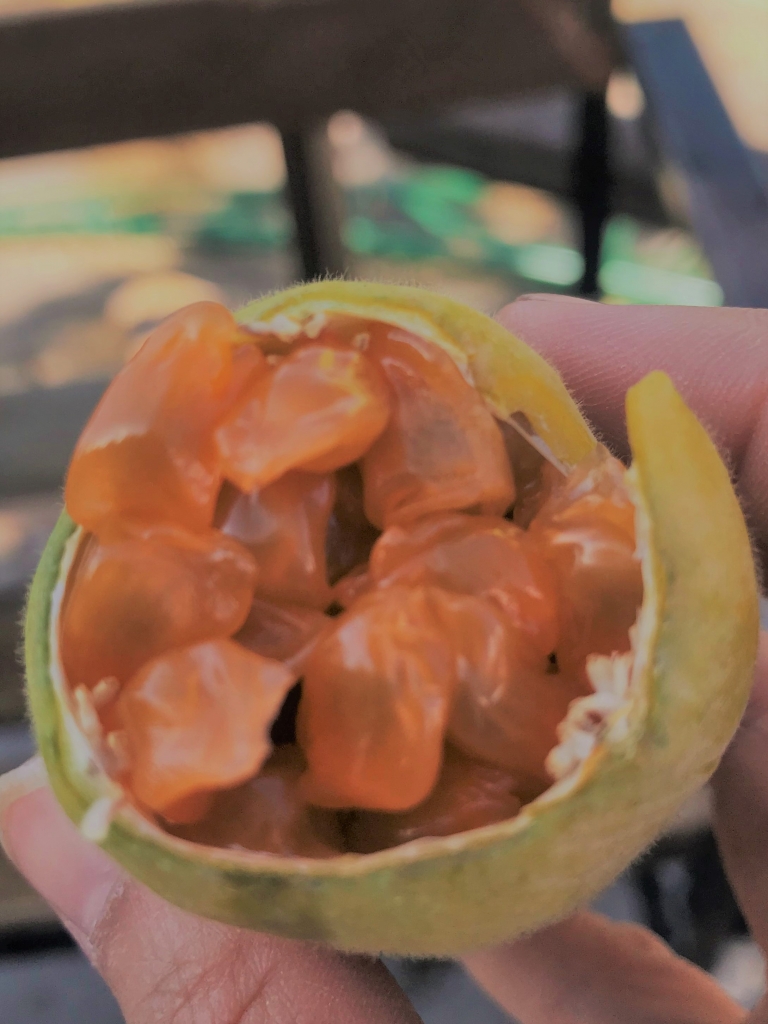
Passion fruit changes as you go from north to south. This one is from the southern most city of Arequipa
The plethora of wonderful fruits and vegetables doesn’t only translate to great cooking which is mostly done the old-fashioned way, using fresh ingredients rather than frozen and canned foods, but also to great cocktails. A bar in Lima looked more like a juicery with bar tenders cutting fresh passion fruit or strawberries and blending it with liquor before serving a potent but dare I say, nutritious cocktail! The national cocktail, Pisco Sour is a sweet and tart blend of Pisco, egg whites and other mixers but my favorite cocktail was Chilcano Maracuya, a lighter, refreshing blend of Pisco and ginger ale with yes, passion fruit!
-

Learning to make Pisco Sour – a lot of shaking involved! -
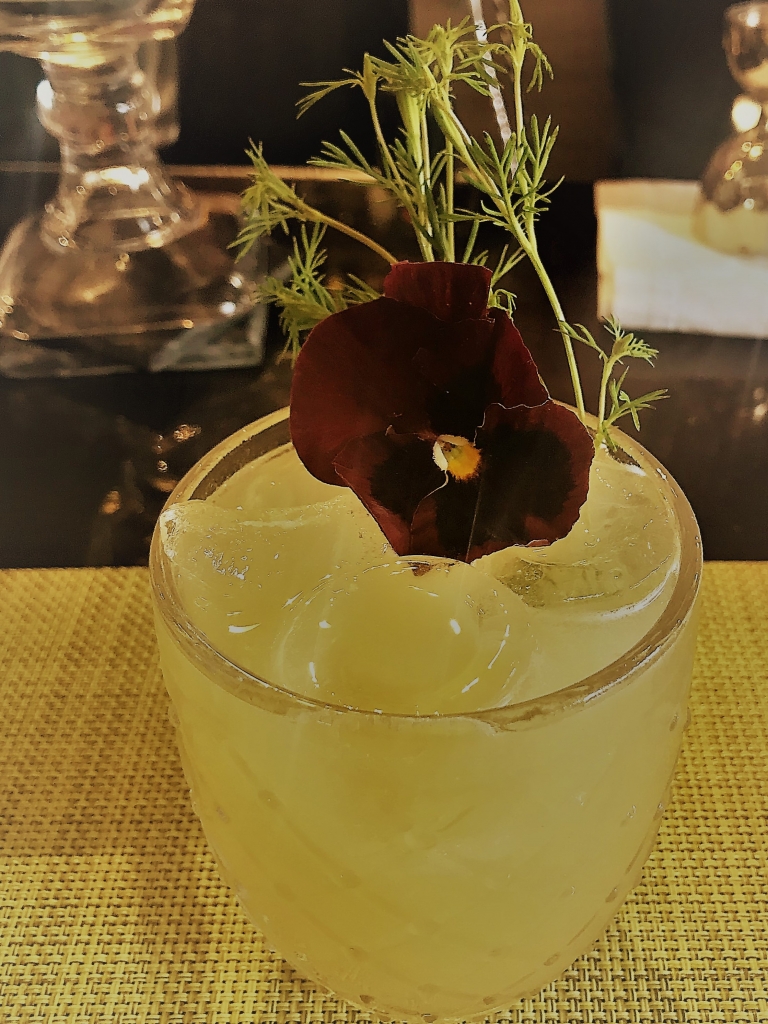
My Chilcano Maracuya tasted as good as it looks!
Gateway to the Andes
After spending a week in Lima and the delightful town of Arequipa, I headed to Cusco, the entry point to the Incan civilization and spirituality. The Incan civilization was the last of the native Andean civilization before the Spanish conquest in the sixteenth century.
As soon as I got to Cusco, I felt like I was in a very special and important place. Surrounded by mountains, it reminded me of Nepal but also of so many other places and peoples. For example, in the city’s main square, Plaza de Armas, stand some beautiful Baroque style monasteries and cathedrals that look like those in other Peruvian cities. But they also look distinct because of the use of Incan rocks that the Spanish commandeered after demolishing the Incan government and religious structures. Like many other great, historical cities, I could see layers of history in every corner in Cusco.
As I traveled through the Andes, I realized how advanced and important the history and civilization of the Incas were. Their ingenuity lied in their industry but also in their grand acceptance and surrender to their environment. They inherited a mountainous land, beautiful but also difficult to cultivate. But, with their hard work and resourcefulness, they were able to not only feed and satisfy their populace but also create a civilization brimming with art and spirituality that was a tribute back to their environment.
While the Incans built many temples, the most famous among them, Machu Picchu sits almost eight thousand feet above sea level. This spiritual complex consists of many shrines, the most unusual and beautiful of which is the temple of the Condor, a majestic bird that flies high in the sky and represents the celestial world.
-
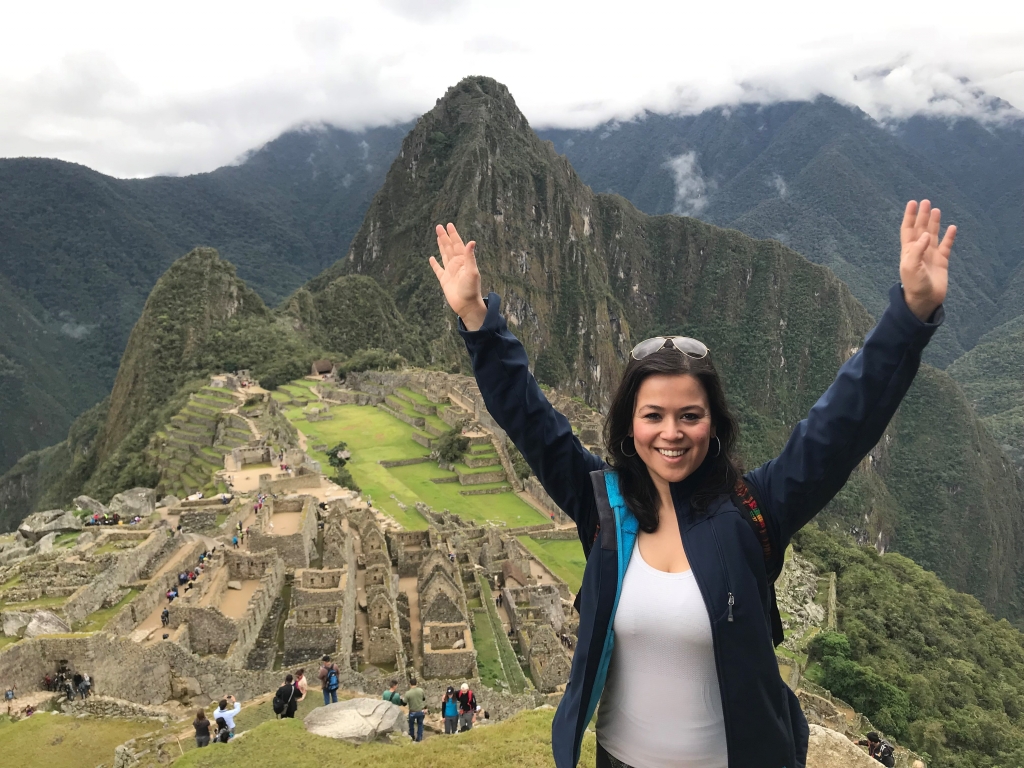
Flying like a condor at Machu Picchu -
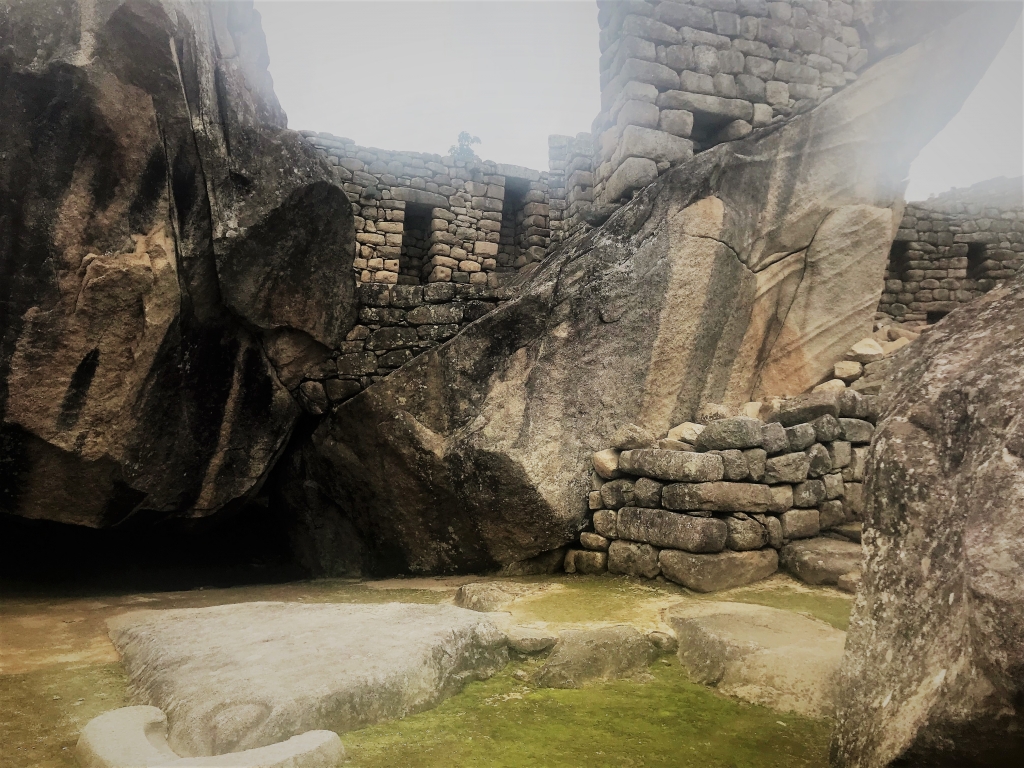
The Condor temple
The Sacred Valley – where heaven and earth meet
The Sacred Valley sits alongside the sacred Urubamba river that the Incans believed reflected their Milky Way, a constellation of stars believed to have animal like forms like the serpent, puma and condor. Among all the Incan territories, this was my favorite.
The Incans regarded the earth as their mother and sun as their father and various animals, plants and landscapes like the mountains had a sacred element. This oneness reminded me of Nepal and the culture I grew up in. In Nepal, mountains, rivers and many landscapes are considered sacred and there is a legacy of revering them. Similar cultural legacy also exists in moving with nature, seasons and the time of the day and in some ways aligning your inner compass with that of nature.
As my guide drove us through the Sacred Valley of the Incas, the serrated mountains did not seem anything less than alive. I think I see a bear, I told him. That’s the spirit of the mountains, he said.

Besides this mystic element, what made the Sacred Valley stand out to me was the glimpse it gave into the Incan everyday life. Many people here, mostly descendants of the Incans, still speak the ancient Quechwa language and observe their traditions and customs. Some of the Incan agricultural terraces are still used for farming. The Sacred valley used to be an agricultural powerhouse in the Incan times. Besides using the terraces for efficient irrigation, they also used them as “agricultural labs,” where they would experiment with microclimates on each step that allowed them to produce different varieties of crops.
-
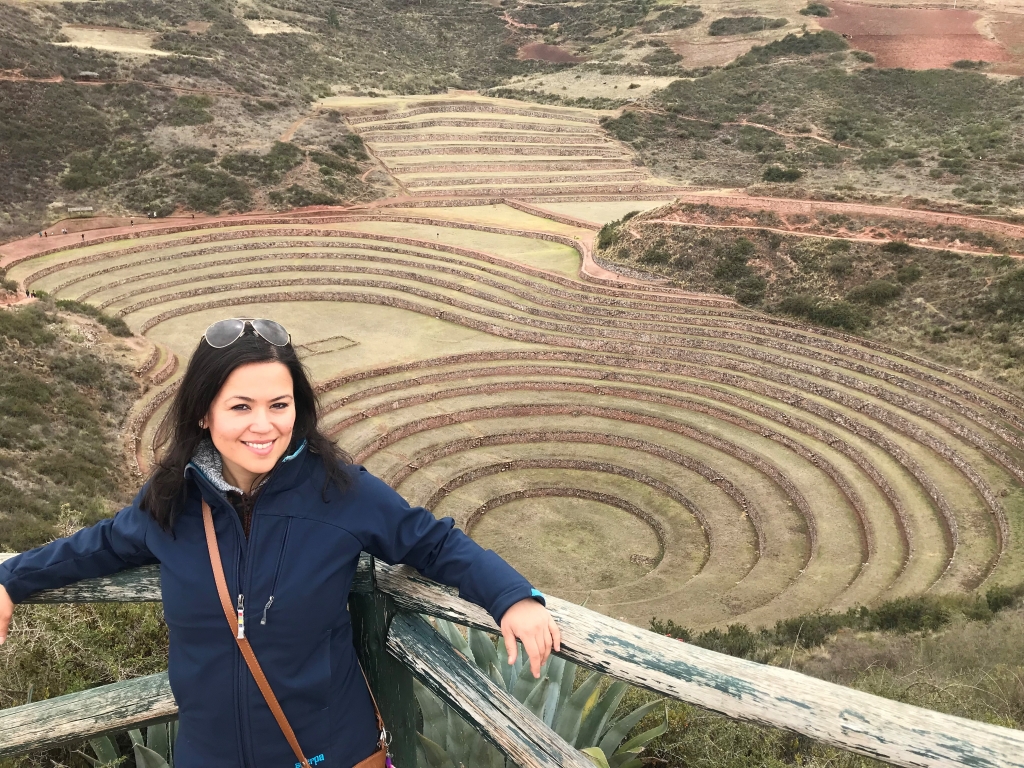
Agricultural terraces in Moray -

A day spent listening to the calm in Sacred Valley
The all encompassing spirituality of the Incas
Equally enchanting are the towns dotted around Sacred Valley, like the town of Ollyantaytambo with its cobbled stone passages that take you back in time and another local Mercado with fruits and vegetables from the Sacred Valley. The town of Pisaq offers another touching glimpse into the lives and values of the Incans. Here, besides the ruins of temples and fortresses, you can also find tombs of people buried on the sides of mountains. Gauging how difficult of a feat it must have been to carry bodies to the top of some very steep mountains and bury them there, I was surprised to learn that these were not the tombs of kings or priests but of ordinary people.
The sanctity of life in the eyes of the Incans was so great. To them, divinity was omnipresent – in landscapes, plants, animals, the earth, the sun and in each other.
Finding peace in uncertainty
Perhaps due to this spiritual experience that travelers to Peru share, I noticed that I connected with people I met there on a deeper level and completely understood them. On a bus tour of Ica, I met a fellow San Franciscan, who had left her Tech job to travel the globe. She laughed as she told us stories about some horrible hostel experiences she had had, as we ate lunch at a popular chicken joint in the area with some other girls we met at the tour. But she was radiant as she talked about her trip so far in Botswana and South Africa.
Next was a Swiss couple I met in my tour of Lake Titicaca near the Bolivian border. They had been traveling the world for over a year with their five-year-old in tow. Their daughter was going to school in Cusco and already spoke four languages. They jokingly complained that their daughter now spoke with an American accent, something she apparently picked up at the international school in Cusco. This couple really impressed me because most people, once they become parents, can never accept uncertainty like this. We can’t even accept uncertainty when we don’t have any responsibilities. But this couple had traded a sense of predictability and safety for an opportunity to live their dreams.
Finally seeing the “infinite sky”
The world is so vast and how little I have seen of it. How happy I am to see it, to learn about different people, cultures and landscapes and feel a connection to them. How happy I am to be out of my comfort zone, to travel to a place I know nothing about and yet find so many common threads going back to places that I have lived in, to converse with people in a language I know very little of and have the most meaningful conversations, to have unplanned days to figure out my next great adventure, to walk around, to observe, feel, and introspect.
What was I so afraid of before? Perhaps of not meeting my own expectations and disappointing myself. So great is our need for certainty that the fear of the unknown can sometimes paralyze us. Be it breaking the cycle of a routine life to travel to a new place by yourself or leaving the certainty of a well-paying but uninspiring job to try something different, we are afraid to take the first step. Instead we grudgingly walk on the same road and ask ourselves, what will happen if I take this chance and something bad happens? The answer is nothing will happen, or rather nothing as bad as we think. Even if everything turns out be different from our expectations, it will still not be a mistake but an adventure, an opportunity to grow, to experience life and to learn about ourselves.
My awakening
Indeed, taking this trip showed me something very profound about my own life. We live a life where we have traded our time and energy for material abundance. The Incans traded their time and an enormous amount of energy and hard work for their values and spirituality that transcended every aspect of their lives. Seeing this made me ask myself, what are my values? Am I living those values in my daily life?
By values, I don’t mean universal human values like non-violence, equal rights, etc. What I am referring to are our personal drivers of happiness. Are we investing enough of our time and energy to pursue these drivers of happiness? Do we know our own strength and are we developing them? Are we living up to our full potential or are we just sleepwalking through life pursuing a set of goals somebody else handed down to us?
This is not the first that these questions have arisen in my mind. In the past, when I felt these questions starting to germinate in me, I would abandon them as my sense of stability felt threatened or as I sensed others did not think these were crucial questions to answer for themselves. But now I believe that these are fundamental questions we must all answer for ourselves. Going through life without even making your best effort to find out, seems like giving up our own best qualities and operating on a level that is much lower than our full potential. I also believe that the answers to these questions will also come from within us. We just have to give time and create the right environment for the seeds to germinate again.
The Incans believed the Sun to be their Father and earth to be their Mother. Surrendering to this sense of oneness with the universe means trusting your inner compass to guide you where you need to be without needing any outward validation. When your eternal guardians are the sun and earth, the whole world is your playground and our time in this playground should be worth every minute!

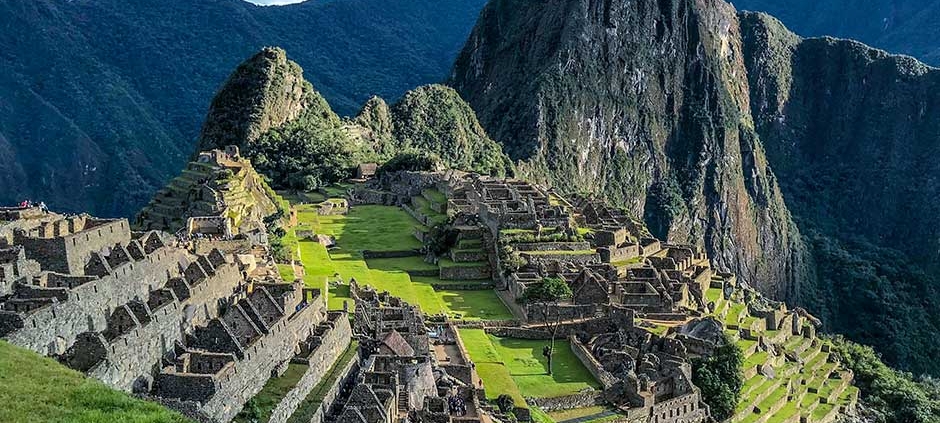






Leave a Reply
Want to join the discussion?Feel free to contribute!